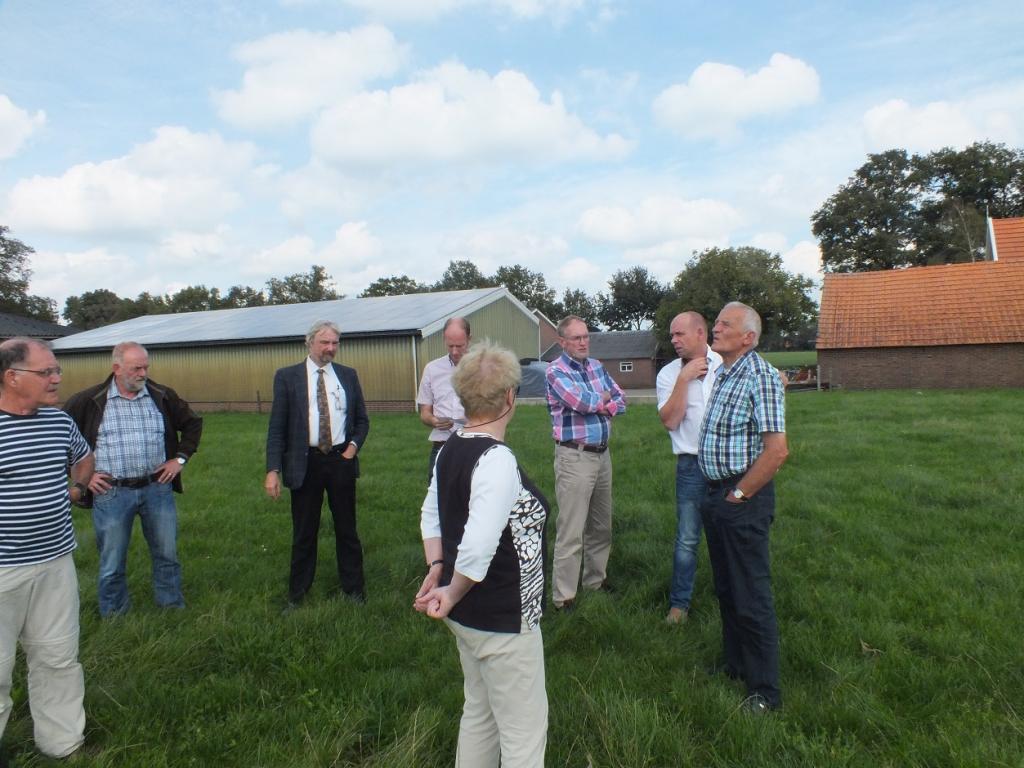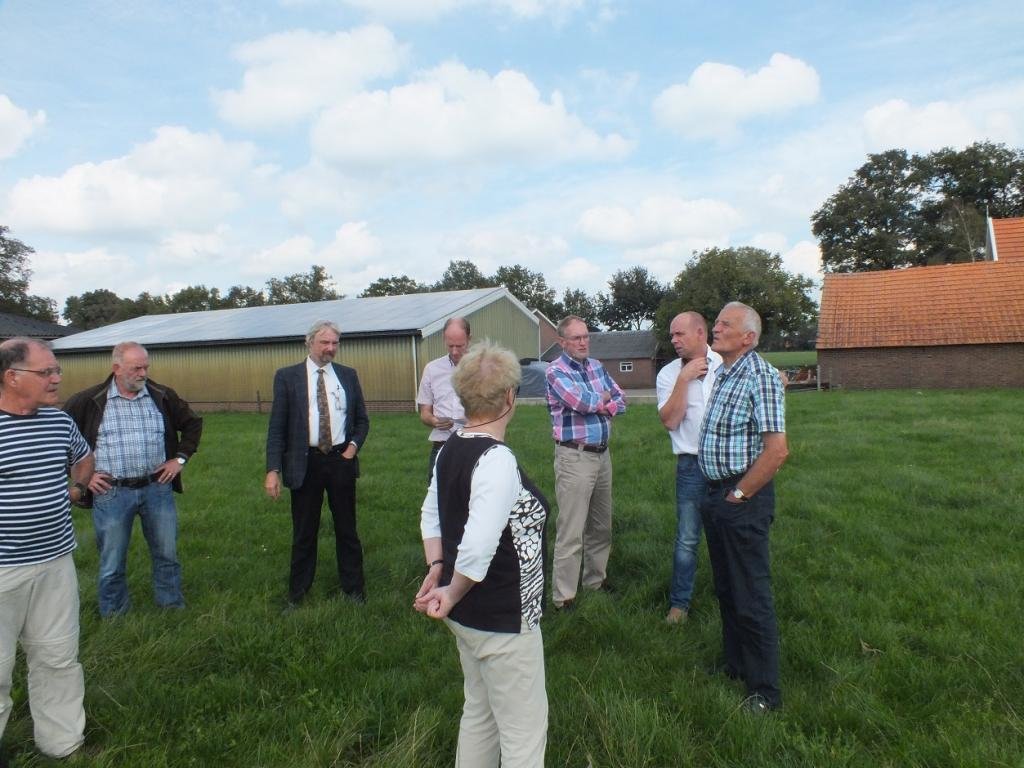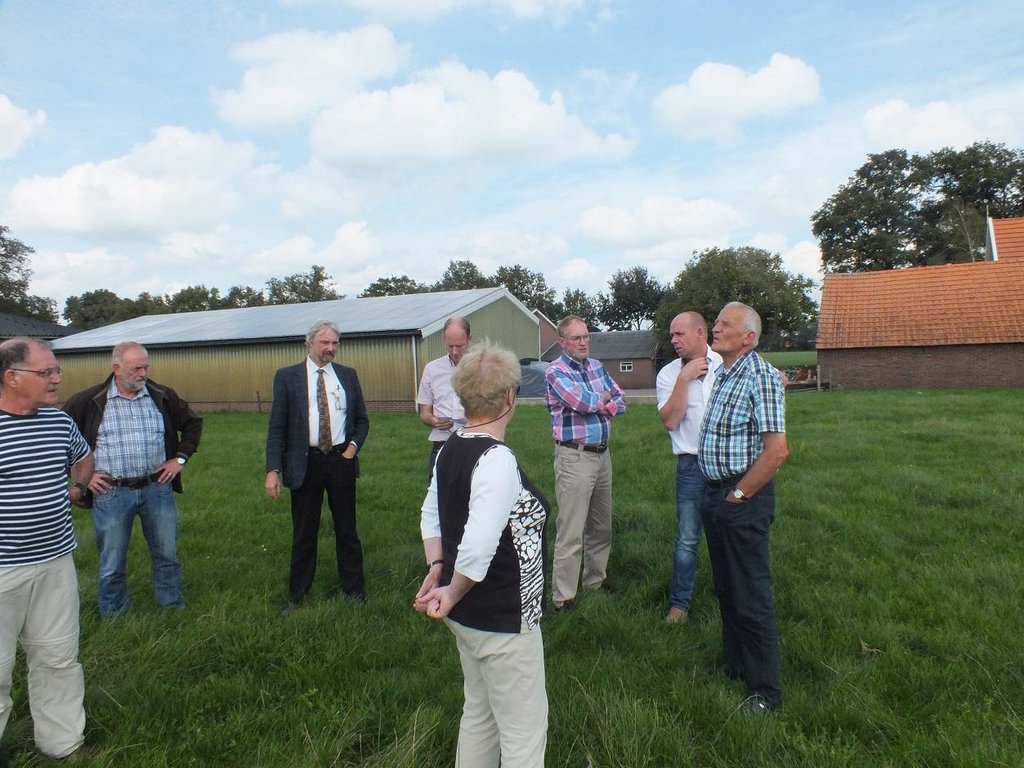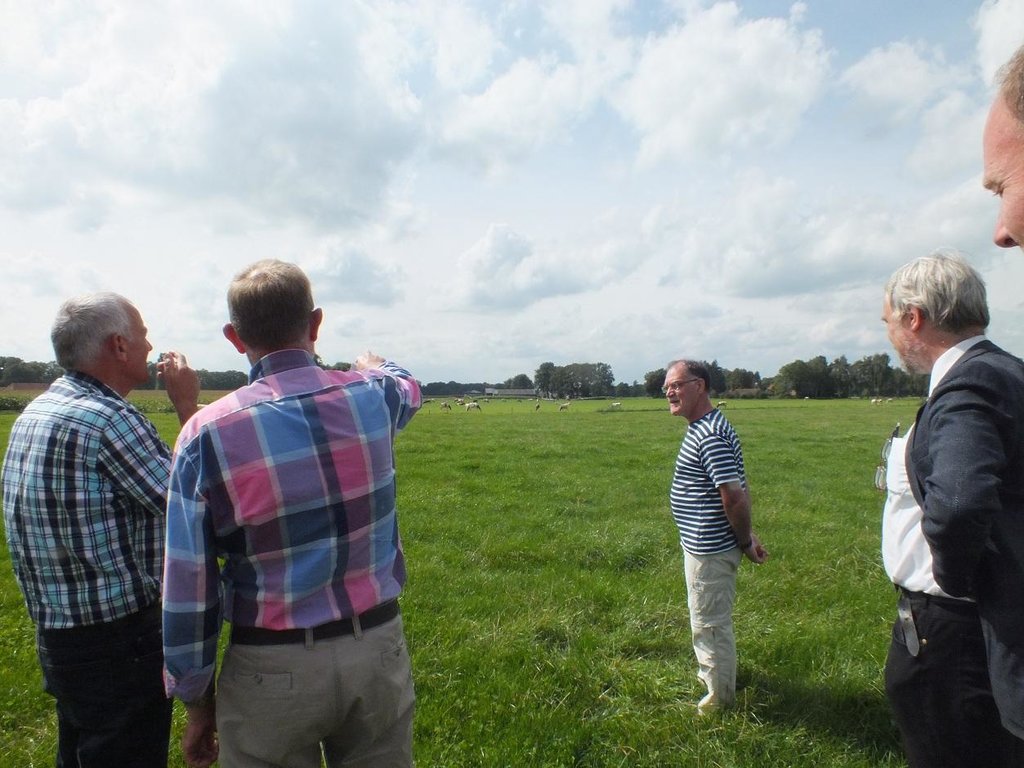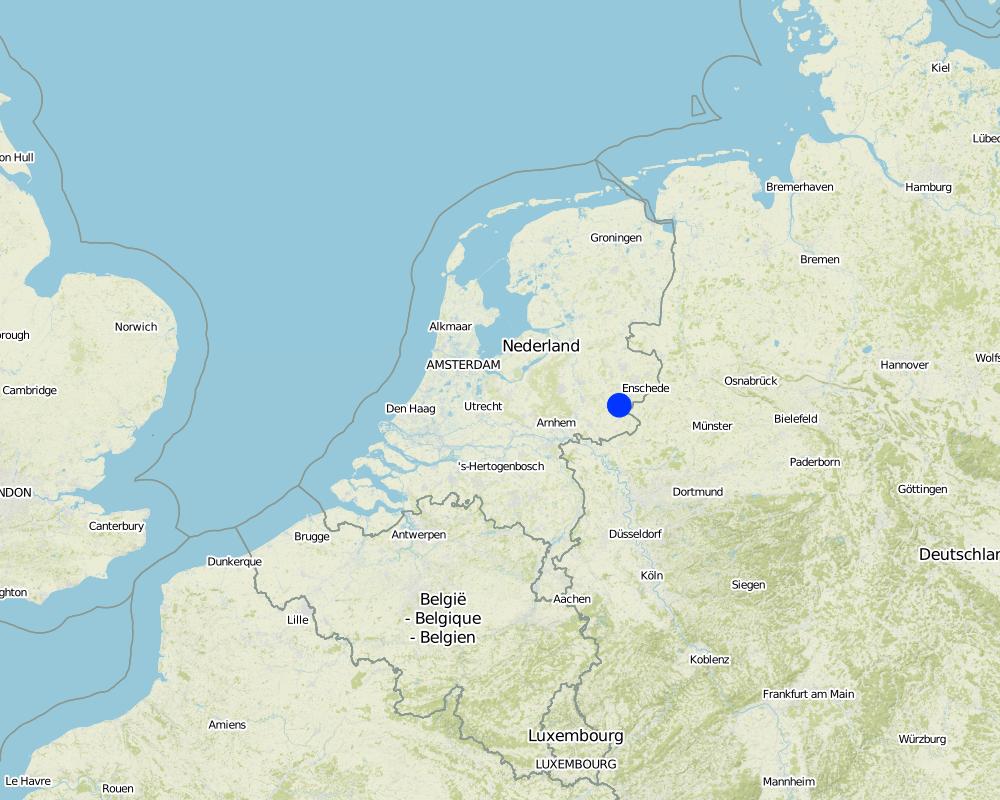Regional process, social innovation [Нидерланды]
- Создание:
- Обновить:
- Составитель: Simone Verzandvoort
- Редактор: –
- Рецензент: Fabian Ottiger
Gezond Zand aanpak (Dutch)
approaches_2523 - Нидерланды
Просмотреть разделы
Развернуть все Свернуть все1. Общая информация
1.2 Контактные данные специалистов и организаций, участвующих в описании и оценке Подхода
Специалист по УЗП:
Smit Annemieke
Alterra-Wageningen UR
Нидерланды
Специалист по УЗП:
Rienks Willem
ROM3D
Нидерланды
Название организации (-ий), содействовавших документированию/оценке Подхода (если применимо)
Wageningen Environmental Research (Alterra) - НидерландыНазвание организации (-ий), содействовавших документированию/оценке Подхода (если применимо)
Hoe Duurzaam - НидерландыНазвание организации (-ий), содействовавших документированию/оценке Подхода (если применимо)
Provincie Gelderland - НидерландыНазвание организации (-ий), содействовавших документированию/оценке Подхода (если применимо)
ROM3D - НидерландыНазвание организации (-ий), содействовавших документированию/оценке Подхода (если применимо)
Ministerie van Economische Zaken - Нидерланды1.3 Условия, регламентирующие использование собранных ВОКАТ данных
Когда были собраны данные (на местах)?
18/09/2014
Составитель и ответственный/-ые специалист(-ы) согласны с условиями, регламентирующими использование собранных ВОКАТ данных:
Да
1.4 Ссылка (-и) на Анкету (-ы) по Технологиям УЗП
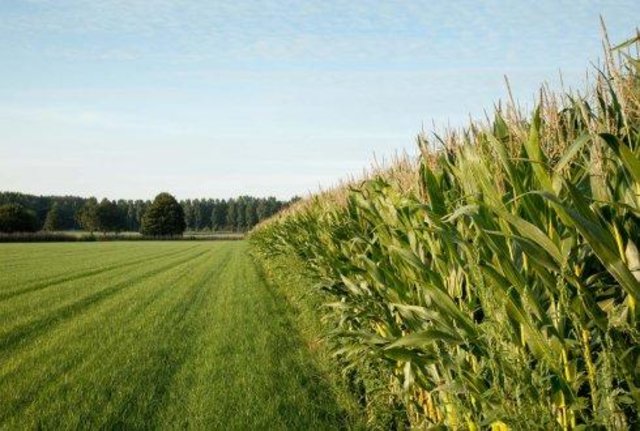
Postpone grassland renewal [Нидерланды]
Postponing the timing of ploughing a grassland field by one or two years to reduce nutrient losses and organic matter decomposition.
- Составитель: Jason Stuka
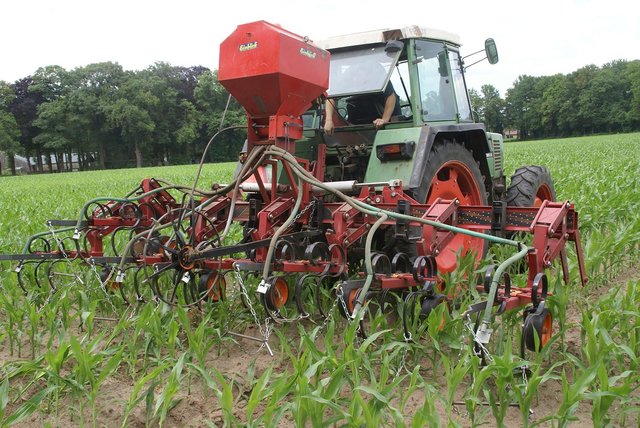
Intercropping of grass and corn to increase soil … [Нидерланды]
Grass intercropping on corn fields
- Составитель: Jason Stuka
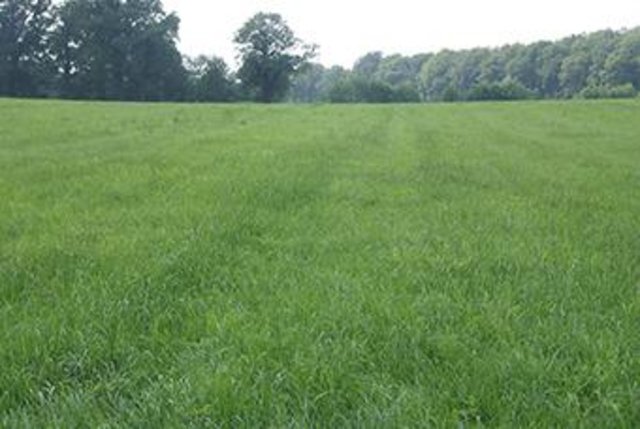
Humic acid application [Нидерланды]
Humic acid application is a technology that allows the farmer to supply organic matter to the soil, without supplying additional nitrogen and phosphorus.
- Составитель: Jason Stuka
2. Описание Подхода УЗП
2.1 Краткое описание Подхода
Social innovation for sustained soil organic matter, clean drinking water and sustainable crop production
2.2 Подробное описание Подхода
Подробное описание Подхода:
Aims / objectives: A group of farmers cooperates with the drinking water company and aims for a more healthy soil. The sandy soil is low in organic matter. They expect that increasing the soil organic matter content will retain more nitrates in the soil, leading to a reduction in nitrate leaching and a higher nutrient availability for the crops.
Dairy farms grow grass and corn. Some farmers also produce potatoes and cereals.
Most farms deal with suboptimal moisture conditions. Increasing the soil organic matter content and improving the soil structure is expected to be a key factor in improving soil moisture content, both in dry and wet periods.
For most farmers soil biodiversity is terra incognita. During the project they will learn about the advantages of good soil fauna and how it can add to better crops.
The case study will explore management options to increase and maintain organic matter content in soil via different rotations, specific varieties of grasses and corn, cover crops and additions of organic amendments and fertilizers. Although the case study is about soil management and technology to improve soil quality, social innovation is a key objective: combining knowledge and experience of a group of neighbours and farmers within a small region and developing solutions and opportunities for the whole area.
Methods: lectures, site visits, group sessions with models (computer sessions), kitchen table interviews (interactive advice), providing relevant literature
Stages of implementation: fund raising - building support - knowledge transfer - pilots of measures - applied expert advice - launch of the foundation HOE Duurzaam - implementation of new measures - increase of nr of participants - field excursion - closing event of the project 'gezond Zand'
Role of stakeholders: Pioneer farmers : initiating and leading the project, fouding HOE Duurzaam
Other farmers : participating, implementing measures, sharing experience
VITENS Drinking water company: providing money and urgency
ROM3d : project leader, motivating farmers, intermediate between area and government
ALterra, Wageningen UR: providing knowledge
Other important information: An adjustment in the national regulations for manure application was an important driving factor for the development of the approach. Farmers were authorised to apply more manure per ha if they have 75% of their land under grassland. This criterion changed to 80% during the implementation of the approach.
2.3 Фотографии, иллюстрирующие Подход
2.5 Страна/ регион/ место, где применялся Подход
Страна:
Нидерланды
Административная единица (Район/Область):
Netherlands, Gelderland
Более точная привязка места:
Municipality of Berkelland
Map
×2.6 Даты начала и окончания реализации Подхода
Год начала реализации:
2011
Год окончания (Если Подход больше не применяется):
2014
2.7 Тип Подхода
- недавняя местная инициатива/ инновация
2.8 Каковы цели/ задачи Подхода
The Approach focused mainly on SLM with other activities (energy, landscape conservation, recreation, drinking water)
The main aims and objectives of the approach were social innovation and social learning with regard to sustainable management of the land in the area. This implied combining knowledge and experience from scientists, neighbours and other farmers. The final goals are to improve soil quality, soil organic matter status and groundwater quality.
The SLM Approach addressed the following problems: Decreasing yields, problems with management (water logging, increased irrigation requirements), changed regulation ('manure derogation') that suppressed agricultural production; drinking water production expected problems with nitrate in the groundwater.
2.9 Условия содействующие применению Технологии/ Технологий в рамках Подхода или затрудняющие его
Наличие/ доступность финансовых ресурсов и услуг
- затрудняют
The device to separate manure in thick and thin fractions could not have been purchased by an individual farmer.
Treatment through the SLM Approach: The foundation purchased the device.
Нормативно-правовая база (землевладение, права на земле- и водопользование)
- содействуют
The existing land ownership, land use rights / water rights greatly helped the approach implementation: Ownership made farmers stakeholder, rented land is treated less carefully; renting farmers are less motivated to change their land mmanagement.
- затрудняют
The exchange of manure between farms in order to comply with manure regulations is not allowed by law.
Treatment through the SLM Approach: The approach searches possibilities to consider the project area as a single enterprise unit for complying with the manure regulation.
Осведомленность в области УЗП, доступность технической поддержки
- затрудняют
Grass undersowing is technically complicated to implement, due to the damage that could be brought to the standing crop.
Treatment through the SLM Approach: Skilled agricultural contractors were hired by the farmers jointly; the concern was releived from the individual farmers.
3. Участие и распределение ролей заинтересованных сторон
3.1 Заинтересованные стороны, участвующие в реализации Подхода и их роли
- местные землепользователи/ местные сообщества
land users and the Foundation HOEduurzaam
Land users not member of the Foundation, but interested to learn from the project. Foundation HOEduurzaam; 98% of the land is owned by members of the Foundation. Agricultural enterprises in the area are mainly run by men. Knowledge is exchanged a.o. during hunting activities. Mainly men attended the lectures and interactive sessions. 3 women attended in the three year period.
- эксперты по УЗП/ сельскому хозяйству
Experts the drinking water company Vitens, the fertiliser companu Triferto, the Louis Bolk research Institute (agronomy) and from Wageningen UR (agronomy, plant production and soil science)
- частный сектор
Vitens Drinking Water Company
- местные власти
Municipality of Berkenwoude
- государственные власти (отвечающие за планирование или принятие решений)
Province of Gelderland
From the Water board Vechstromen, Municipality Berkelland, Province of Gelderland. Mayor and counseller of the community Berkelland, Deputy of the Province of Gelderland, Ministry of Economic Affairs
- the foundation HOEDuurzaam
HOEDuurzaam. Drinking water company Vitens, agricultural nature association, cultural landscape heritage association
Если участвовало несколько заинтересованных сторон, назовите ведущую организацию:
The approach was designed jointly by national SLM specialists from the consultancy firm ROM3D and Alterra, the land users and the Foundation HOEduurzaam (representing land users, entrepreneurs and citizens in the area). The application for funding at the Province was made by one of the land users on behalf of the land users.
3.2 Участие местных землепользователей/ местных сообществ на разных стадиях реализации Подхода
| Участие местных землепользователей/ местных сообществ | Перечислите участников и опишите их вовлеченность | |
|---|---|---|
| инициирование/ мотивация | самоорганизация | 8 land users submitted the application for funding to the Province to implement the measures |
| планирование | интерактивное | Due to the interactive nature of the project there was no official planning. There was a sequence of knowledge supplied, testing in pilots, assess outcomes, renewed pilots and implementation of measures proven succesfull. |
| выполнение | самоорганизация | |
| мониторинг/ оценка | интерактивное | |
| Research | внешняя поддержка | Lectures from external advisors (Peter Kuikman, Coen ter Berg, Jos Groten (Wageningen UR-PPO), Annemieke Smit (Wageningen UR-Alterra), Zwier van der Vechte (Wageningen UR Livestock Research) and calculation sessions with the HLB tool. |
3.4 Принятие решений по выбору Технологии/ Технологий УЗП
Укажите, кто принимал решение по выбору применяемой Технологии/ Технологий:
- в основном землепользователи при поддержке специалистов по УЗП
Поясните:
The land users took the final decisions in their selection of SLM technologies and measures. The SLM specialists contributed by giving information and advice.
Decisions on the method of implementing the SLM Technology were made by mainly by land users supported by SLM specialists
4. Техническая поддержка, повышение компетенций и управление знаниями
4.1 Повышение компетенций/ обучение
Проводилось ли обучение землепользователей/ других заинтересованных лиц?
Да
Укажите, кто проходил обучение:
- землепользователи
Если существенно, укажите гендерный и возрастной состав, статус, этническую принадлежность и т.д.
male farmers aged between 30 and 60
Тип обучения:
- обмен опытом между фермерами
- опытные участки
- курсы
Тип обучения:
- advisory sessions between land users and SLM advis
Рассматриваемые темы:
fertilisation, soil fertility, crop management
4.2 Консультационные услуги
Есть ли у землепользователей возможность получать консультации?
Да
Укажите, где именно оказываются консультационные услуги:
- на полях землепользователей
Описание/ комментарий:
Name of method used for advisory service: 'zitdagen'; advisory sessions between land user and consultant; Key elements: problem analysis: which fields have the largest problems and why? training sessions with the computer tool for selection of measures to improve OM status, meetings for knowledge exchange; There was also a questionnaire to inventory the measures farmers wanted to implement.
Advisory service is quite adequate to ensure the continuation of land conservation activities; The Foundation HOEduurzaam will support the continuation of SLM activities in the area.
4.3 Институциональная (организационная) поддержка
В ходе реализации Подхода были ли организованы новые институциональные структуры или поддержаны уже существующие?
- да, немного
Укажите уровень, на котором структуры были укреплены или вновь созданы:
- местные
Укажите тип поддержки:
- финансовая
- повышение компетенций/ обучение
- marketing
Подробнее:
Foundation HOEduurzaam has small financial revenues from their activities. Campsite Veldzicht rented their accommodation several times for venues of the land users and stakeholders, and will benefit from publicity around the approach to attract more visitors.
4.4 Мониторинг и оценка
Являются ли мониторинг и оценка частью Подхода?
Да
Комментарии:
bio-physical aspects were ad hoc monitored by project staff through observations; indicators: pictures of development of grass undersowing and crops
bio-physical aspects were ad hoc monitored by land users, other through measurements; indicators: land users should measure OM every 4 years to get subsidies; constituents of the groundwater used to produce drinking water
There were no changes in the Approach as a result of monitoring and evaluation: The approached worked well, so there were no changes until now.
There were few changes in the Technology as a result of monitoring and evaluation: Several technologies were abandoned or could not be implemented: substituting crops in rotations (less potatoes, early germinating maize varieties), use of roadside rsidues as compost (due to legal constraints)
Humic acid was implemented at more fields after the first optimistic results. The early harvest of corn was not implemented, but sowing grasss underneath the corn was developed during the project.
4.5 Научные исследования
Были ли научные исследования частью Подхода?
Да
Укажите темы исследований:
- экономика / маркетинг
- технология
Напишите подробнее и назовите тех, кто выполнял исследования:
economics/marketing: cost-benefit analysis still to be performed - ROM3D and Alterra and Foundation HOEduurzaam
technology: continued search for new methods and measures; mapping the status of soil organic matter and soil organic matter balance calculations with a tool - Alterra, ROM3 and Foundation HOEduurzaam
Research was carried out both on station and on-farm
5. Финансирование и внешняя материальная поддержка
5.1 Годовой бюджет мероприятий по УЗП в рамках Подхода
Если точный годовой бюжет неизвестен, укажите примерный диапазон затрат:
- 10000-100000
Комментарий (например, основные источники финансирования/ ключевые доноры):
Approach costs were met by the following donors: international (European Fund for Rural Development and the EU FP7 RECARE project): 5.0%; government (Ministry of Economic Affairs ): 40.0%; private sector (Vitens drinking water company): 10.0%; local government (district, county, municipality, village etc) (Province of Gelderland (100-350 €/ha) - subsidy regulation for sustainable soil management): 35.0%; local community / land user(s) (labour, time investment, seeds, materials): 5.0%; other (own contributions research and consultancy firms (Alterra, ROM3D)): 5.0%
5.2 Финансирование и внешняя материальная поддержка, предоставляемая землепользователям
Предоставлялась ли землепользователям финансовая/ материальная поддержка для применения Технологии /Технологий?
Да
5.3 Субсидии на отдельные затраты (включая оплату труда)
- оборудование
| Укажите, какие ресурсы были субсидированы | В какой степени | Опишите субсидии подробнее |
|---|---|---|
| техника | профинансированы частично | Manure separator |
- сельскохозяйственные
| Укажите, какие ресурсы были субсидированы | В какой степени | Опишите субсидии подробнее |
|---|---|---|
| семена | профинансированы частично | |
| Human acids | профинансированы частично | |
Комментарии:
payments were meant to cover potential costs of reduced crop yield and the agricultural contractor (loonwerker)
5.4 Кредитование
Предоставлялись ли в рамках Подхода кредиты на мероприятия УЗП?
Нет
6. Анализ влияния и заключительные положения
6.1 Влияние Подхода
Сумел ли Подход помочь землепользователям внедрить и поддерживать технологии УЗП?
- Нет
- Да, немного
- Да, умеренно
- Да, существенно
Farmers are more concerned about soil and organic matter, they understand that they have options to improve and make choices in implementation of measures. Some measures need coordination at the aera level (e.g. the use of goat manure and roadside residues), those were not implemented yet, but small scale mearsures are becoming more common.
Сумел ли Подход расширить возможности социально и экономически уязвимых групп?
- Нет
- Да, немного
- Да, умеренно
- Да, существенно
no socially and economically disadvantaged groups in this area
Сумел ли Подход разрешить правовые проблемы землевладения/ землепользования, препятствующие использованию технологий УЗП?
- Нет
- Да, немного
- Да, умеренно
- Да, существенно
Ownership of the land made it possible for the farmers to decide what management was implemented. Hindering: when fields were rented by farmers outside the area/project, poor management of the soil decreased the soil organic matter content.
Did other land users / projects adopt the Approach?
- Нет
- Да, немного
- Да, умеренно
- Да, существенно
Did the Approach lead to improved livelihoods / human well-being?
- Нет
- Да, немного
- Да, умеренно
- Да, существенно
Farmers learned about how others are working and they met more regularly in an informal setting.
Did the Approach help to alleviate poverty?
- Нет
- Да, немного
- Да, умеренно
- Да, существенно
Poverty does not occur in the area.
6.2 Основные причины, побуждающие землепользователей внедрять УЗП
- рост продуктивности
The dairy farmer's income is under pressure due to the low milk price.
- рост прибыли (доходности) и рентабельности
Farmers realise that in the long term, declining soil organic matter will reduce production.
- нормативно-правовое регулирование (штрафы)/ контроль
Stricter manure regulation under the CAP forces farmers to manage organic matter efficiently.
- причастность к движению/ проекту/ группе/ сети
Farmers are interested to learn improvements for farm management from other farmers.
- экологическая сознательность
Farmers care for their land and animals. Also for good quality groundwater.
6.3 Долгосрочная устойчивость мероприятий в рамках Подхода
Могут ли землепользователи самостоятельно (без внешней поддержки) продолжать применение того, что было реализовано в рамках Подхода?
- да
Если да, опишите как:
The Foundation HOEduurzaam will continue to act in the area. For the next 10 years measures will be part
of the subsidy grant.
6.4 Сильные стороны/ преимущества Подхода
| Сильные стороны/ преимущества/ возможности по мнению землепользователей |
|---|
| Farmers are positive about the information provision on the measures in the informatoin sessions, by their mutual exchange of information, and through the direct contact with experts. They expect the measures to increase the soil organic matter and yields, also through an improved bearing capacity of the soil. (How to sustain/ enhance this strength: Continued exchange of information on measures to increase SOM between the farmers themselves, subsidy to finance the measures (either through the regional government or the dairy company).) |
| Сильные стороны/ преимущества/ возможности по мнению составителя или других ключевых специалистов |
|---|
|
1. social innovation by working together and learning from each other 2. HOEduurzaam (foundation) represents 98% of the land owners and land users in the area, and is an important stakeholder for the local /regional goverment 3. all training was specifically designed for the group 4. HOEduurzaam is also active in the Energie-marke, a local renewable energy cooperative (How to sustain/ enhance this strength: continuing the approach, Foundation HOEduurzaam remaining active, follow-up projects to monitor effects of measures to stimulate farmers to continue to implement the measures. ) |
6.5 Слабые стороны/ недостатки Подхода и пути их преодоления
| Слабые стороны/ недостатки/ риски по мнению землепользователей | Возможные пути их преодоления/снижения? |
|---|---|
| No disadvantages to the approach were mentioned by the land users. | not applicable |
| Слабые стороны/ недостатки/ риски по мнению составителя или ответственных специалистов | Возможные пути их преодоления/снижения? |
|---|---|
|
1. support of the measures by consultants was only 2 years, whereas the effects on SOM are only perceptable after 10 years 2. Foundation HOEduurzaam does not have a soil expert |
Bring attention to production and water use. |
7. Справочные материалы и ссылки
7.1 Методы сбора/источники информации
- выезды на места, полевые обследования
- опросы землепользователей
7.2 Ссылки на опубликованные материалы
Название, автор, год публикации, ISBN:
website of the Foundation HOEduurzaamW.A. Rienks en H. Leever, 2014. Gezond Zand – organische stof als sleutel voor een vruchtbare bodem en schoon water.
Где опубликовано? Стоимость?
http://www.hoeduurzaam.nl http://www.hoeduurzaam.nl/images/gallery/nieuws/Brochure/BrochureHoeduurzaam%20Definitief.pdf
Название, автор, год публикации, ISBN:
W.A. Rienks en H. Leever, 2014. Gezond Zand – organische stof als sleutel voor een vruchtbare bodem en schoon water.
Где опубликовано? Стоимость?
http://www.hoeduurzaam.nl/images/gallery/nieuws/Brochure/BrochureHoeduurzaam%20Definitief.pdf
Ссылки и модули
Развернуть все Свернуть всеСсылки

Postpone grassland renewal [Нидерланды]
Postponing the timing of ploughing a grassland field by one or two years to reduce nutrient losses and organic matter decomposition.
- Составитель: Jason Stuka

Intercropping of grass and corn to increase soil … [Нидерланды]
Grass intercropping on corn fields
- Составитель: Jason Stuka

Humic acid application [Нидерланды]
Humic acid application is a technology that allows the farmer to supply organic matter to the soil, without supplying additional nitrogen and phosphorus.
- Составитель: Jason Stuka
Модули
Нет модулей


